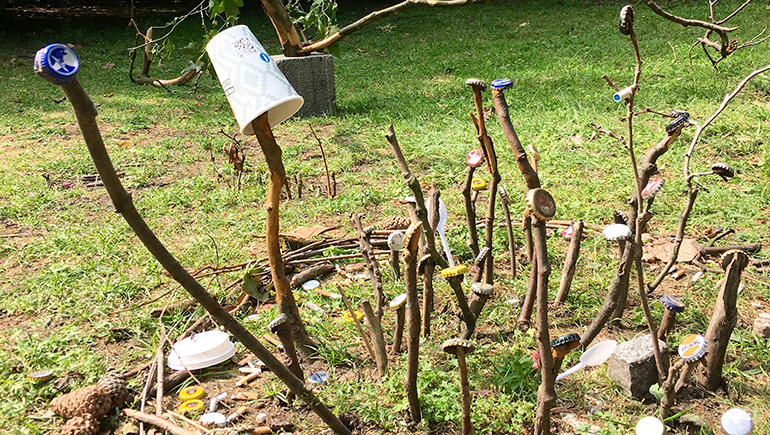Back from the summer break, back in office, back to business. For today, we look back to the Summer University and Studium Generale of the UdK Berlin. The artist collective plan b was hosting a seminar for students in our Hybrid Lab. It was an interdisciplinary journey to the end of the world…
The Hybrid Lab provided a home for the Summer University of the Arts and Studium Generale students from the 23rd to 26th of June, housing the seminar “What will we do when the world ends?”. Led by Daniel Belasco Rogers and Sophia New, who work together under the name plan b, we were asked to ponder the question posed by the title, aiming to develop a better understanding of hopes, fears, and doubts about when, how, and if the world will end – and what comes after. Throughout the weekend, we examined potential causes, outcomes, and forms of the apocalypse from multiple disciplinary perspectives. Is it economic collapse or environmental catastrophe that awaits us? Do our personal and pop-culture visions of the apocalypse favor planet-wide destruction or human extinction? Through group discussion and activities, individual writing and visualization exercises, videos, and a selection of thematic books, including works from Margaret Atwood and Donna Haraway, we pursued themes such as responsibility, grief, and life after humans. Further, we examined the End-of-the-World both in the context of our own lives and from a global perspective.
To bring numerous End-of-the-World narratives closer together we headed to Zoologischer Garten and Dicke Marie, the oldest tree in Berlin. We were pushed to view the natural world differently. During the first trip, we imagined how humans would survive the area in an apocalyptic scenario: identifying plants of edible and medicinal value and developing survival strategies using both what the natural world has to offer and the relics humanity would leave behind. In the latter trek, we took varying approaches: physically and mentally shifting our perspectives as upright human beings to pursue a more horizontal approach to the world, getting to know a plant by examining it in detail – without feeling the urgency to know exactly what it is or does, or pondering what systems of life and communication that lie beneath the earth. Thus, we remained grounded, exploring the broad and abstract themes our discussions in tangible ways.
In the closing days of the seminar, we split into groups to pursue independent projects. Through a collaborative brainstorming session, we drew upon and tied together ideas that warranted further exploration. After discussion within groups, we presented our results in a variety of ways. One group chose to pursue themes of death, ritual, and acceptance by creating an End-of-the-World ritual for each student to experience. The group carefully took note of how each individual approached the given words, gestures, and materials differently. The following group explored ideas of crisis and alternative education. Taking advantage of the natural world surrounding the lab, these students created and shared a collaborative outdoor project using organic and inorganic objects found on the lawn. The final group pursued a more traditional route of presentation, displaying their personal research regarding religion, faith, and interpretation – in other words, how different faiths conceptualize the end of the world, and how interpretations thereof vary – through graphs. Each presentation took a unique approach, allowing us to find common ground and develop new ideas in the pursuit of answers to “What we will do when the world ends?”
– Robin Willscheidt–Johnson (participant, Stanford Student and plan b intern)
About plan b: plan b are the British artists Sophia New and Daniel Belasco Rogers who have been working together and are based in Berlin since 2001. The work is both site specific and relationship specific and often takes personal daily data as the main material to be made public through a practice than spans visual art, new media, performance, installation and socially engaged practice. It has been shown in festivals, exhibitions, theatres and on the streets of many different cities. They both regularly teach on a variety of arts courses in Germany and abroad.

